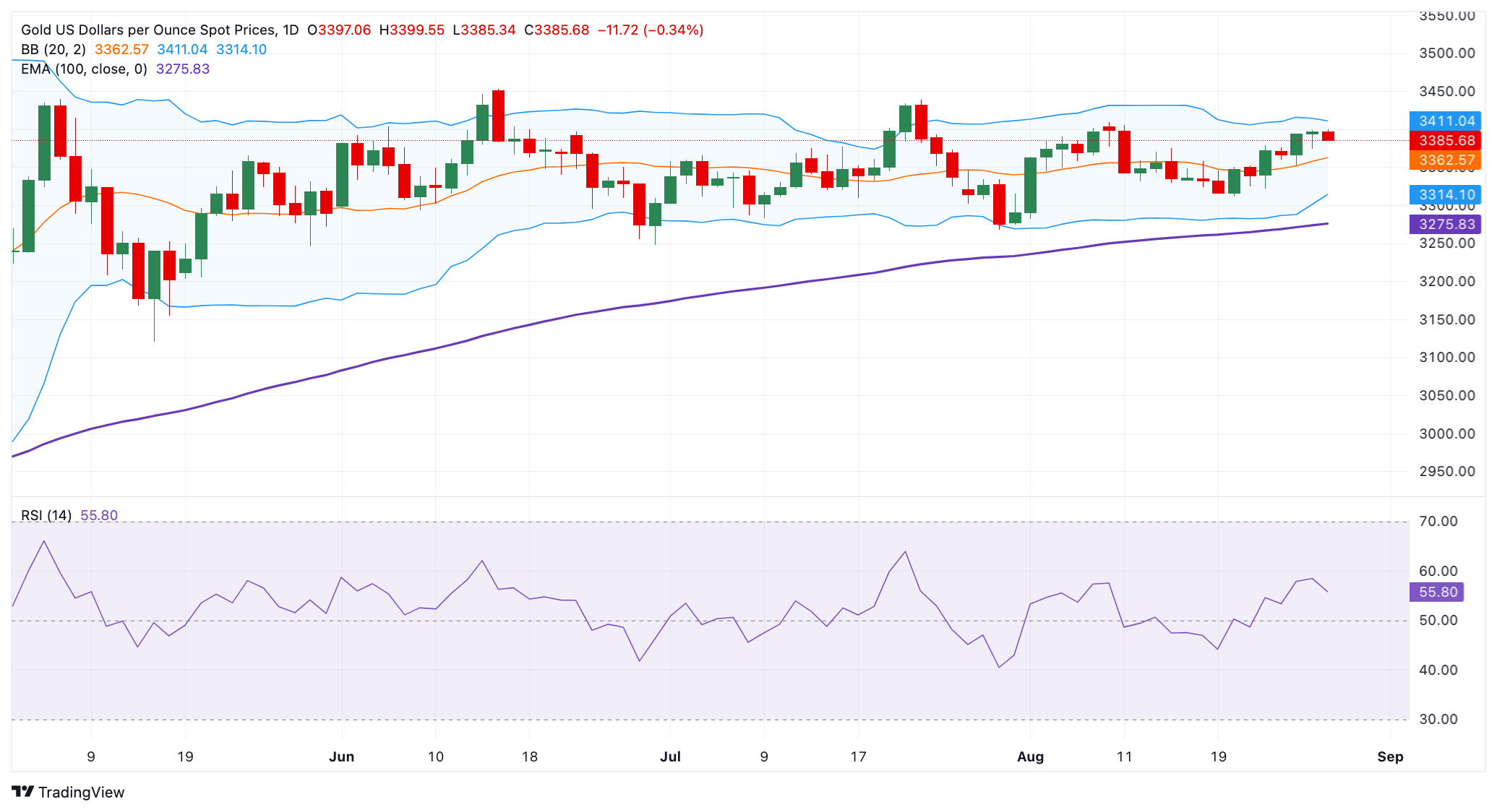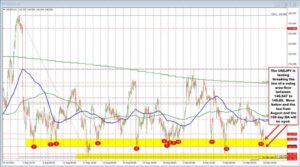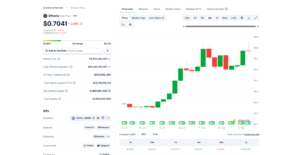Gold loses ground on profit-taking, US GDP data looms

- Gold price edges lower in Thursday’s Asian session.
- Worries over the Fed’s independence might limit the downside for the Gold price.
- The second estimate of US Q2 GDP data will take center stage later on Thursday.
The Gold price (XAU/USD) trades in negative territory during the Asian trading hours on Thursday. The precious metal retreats from a three-week high near $3,400 amid a rebound in the US Dollar (USD) and some profit-taking. Concerns about the Federal Reserve’s (Fed) independence lingered after US President Donald Trump fired Fed Governor Lisa Cook over allegations of mortgage borrowing misconduct. This, in turn, underpins the Gold price as it is considered a traditional safe-haven asset.
Gold traders await the second estimate of the US Gross Domestic Product (GDP) later on Thursday. The US economy is expected to grow at an annual rate of 3.1% in the second quarter (Q2). If the report shows a better-than-estimated outcome, this could lift the Greenback and weigh on the USD-denominated commodity price. On Friday, the attention will shift to the US Personal Consumption Expenditures (PCE) inflation data for clues on interest rate cuts.
Daily Digest Market Movers: Gold price slumps as the US Dollar strengthens
- New York Fed President John Williams on Wednesday emphasized the importance of central bank independence as Trump looks to exert control over monetary policy.
- US President Donald Trump stated on Monday that he has fired Fed Governor Lisa Cook, the first instance of a president firing a central bank governor in the Fed’s history.
- In response, Lisa Cook said that she would file a lawsuit to prevent her ouster, adding that Trump has no authority to fire her from the central bank, and she will not resign.
- Markets are now pricing in nearly an 87% possibility of a 25 basis point (bps) rate cut at the Fed’s policy meeting next month, according to the CME FedWatch tool.
- “If (the PCE data) is a miss showing stronger inflation, that might begin to call into question whether the Fed’s going to be able to cut interest rates in September,” said Jim Wyckoff, senior analyst at Kitco Metals.
Gold sticks to bullish bias in the longer term despite profit-taking
The Gold price is losing momentum on the day. The positive outlook of the precious metal remains intact, with the price being well-supported above the key 100-day Exponential Moving Average (EMA) on the daily chart. The 14-day Relative Strength Index (RSI) stands above the midline near 56.55, indicating that further upside looks favorable in the near term.
The immediate resistance level for Gold emerges at the upper boundary of the Bollinger Band of $3,410. A decisive break above this level could pave the way to $3,439, the high of July 23. Further north, the next hurdle is seen at $3,500, the psychological level and the high of April 22.
On the flip side, the initial support level for XAU/USD is located at $3,351, the low of August 26. Extended losses could see a drop to $3,313, the lower limit of the Bollinger Band. The additional downside filter to watch is $3,275, the 100-day EMA.

Fed FAQs
Monetary policy in the US is shaped by the Federal Reserve (Fed). The Fed has two mandates: to achieve price stability and foster full employment. Its primary tool to achieve these goals is by adjusting interest rates.
When prices are rising too quickly and inflation is above the Fed’s 2% target, it raises interest rates, increasing borrowing costs throughout the economy. This results in a stronger US Dollar (USD) as it makes the US a more attractive place for international investors to park their money.
When inflation falls below 2% or the Unemployment Rate is too high, the Fed may lower interest rates to encourage borrowing, which weighs on the Greenback.
The Federal Reserve (Fed) holds eight policy meetings a year, where the Federal Open Market Committee (FOMC) assesses economic conditions and makes monetary policy decisions.
The FOMC is attended by twelve Fed officials – the seven members of the Board of Governors, the president of the Federal Reserve Bank of New York, and four of the remaining eleven regional Reserve Bank presidents, who serve one-year terms on a rotating basis.
In extreme situations, the Federal Reserve may resort to a policy named Quantitative Easing (QE). QE is the process by which the Fed substantially increases the flow of credit in a stuck financial system.
It is a non-standard policy measure used during crises or when inflation is extremely low. It was the Fed’s weapon of choice during the Great Financial Crisis in 2008. It involves the Fed printing more Dollars and using them to buy high grade bonds from financial institutions. QE usually weakens the US Dollar.
Quantitative tightening (QT) is the reverse process of QE, whereby the Federal Reserve stops buying bonds from financial institutions and does not reinvest the principal from the bonds it holds maturing, to purchase new bonds. It is usually positive for the value of the US Dollar.





